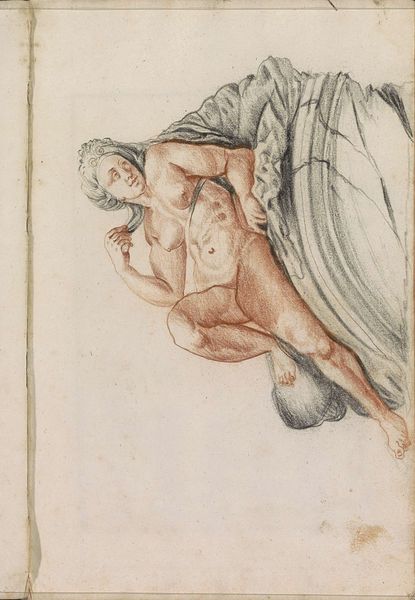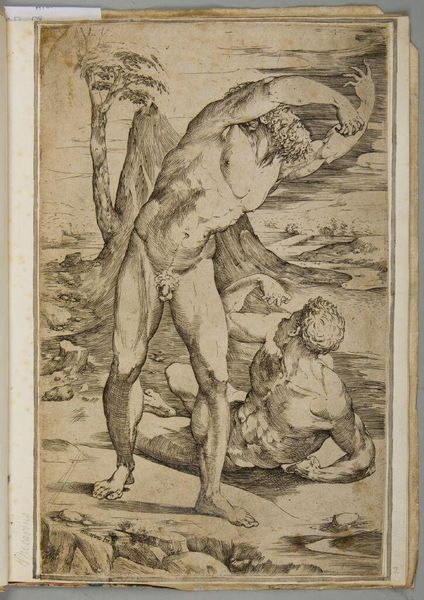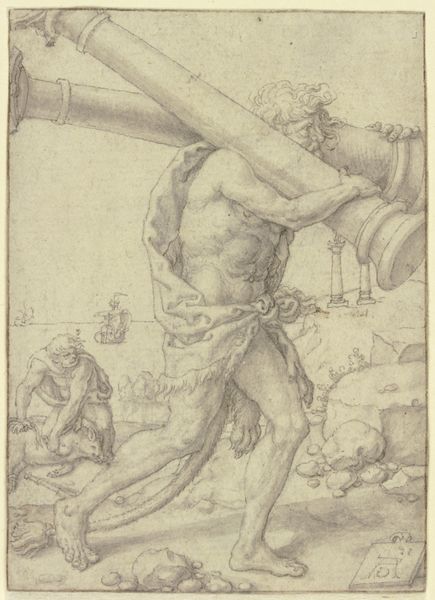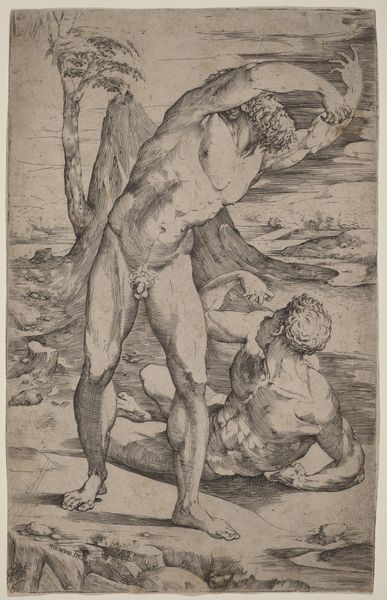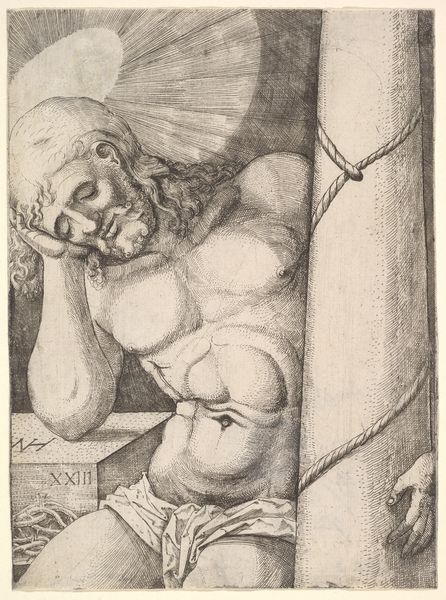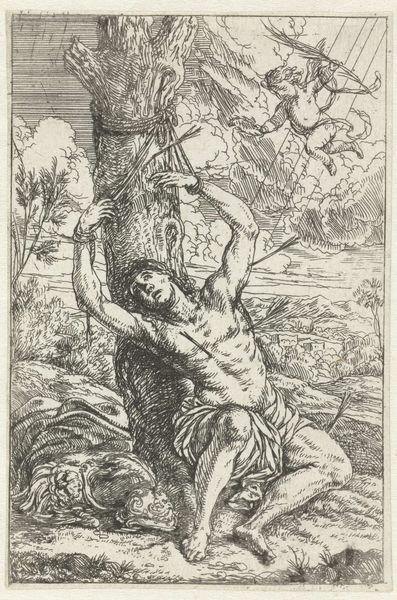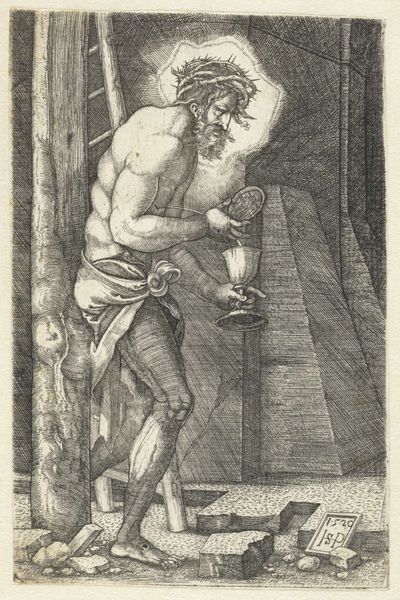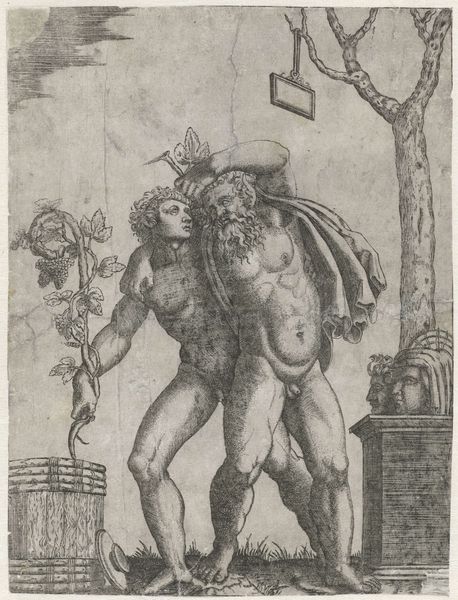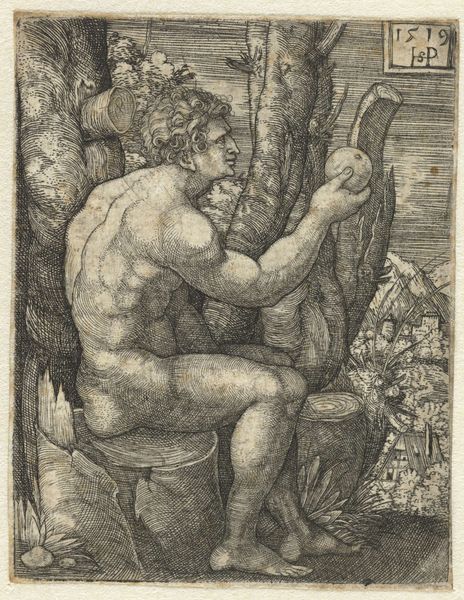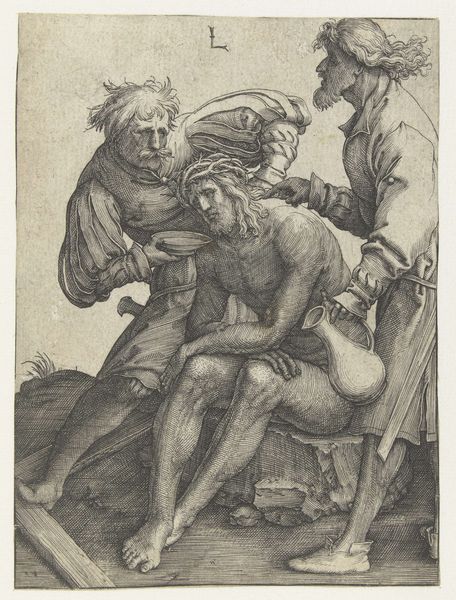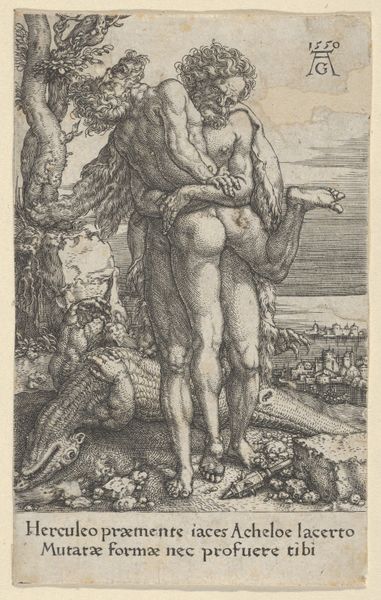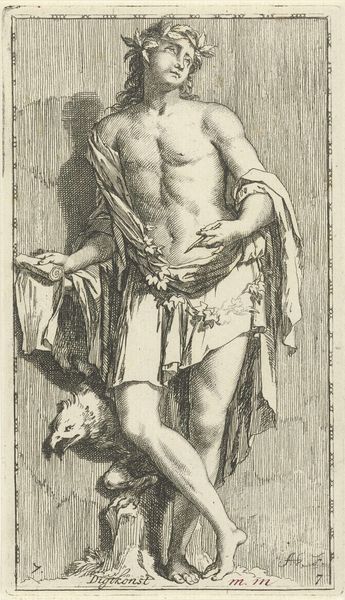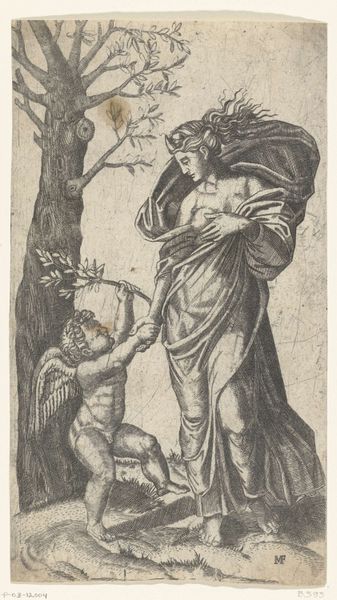
drawing, coloured-pencil, pencil, pen
#
portrait
#
drawing
#
coloured-pencil
#
allegory
#
baroque
#
pencil sketch
#
coloured pencil
#
pencil
#
pen
#
history-painting
#
nude
#
watercolor
Copyright: Rijks Museum: Open Domain
Curator: At first glance, this artwork feels incredibly raw. There’s a palpable sense of vulnerability in the figure, an unvarnished depiction of repentance and mortality. Editor: Indeed. What we are looking at is “Boetvaardige Hieronymus,” or “Repentant Jerome,” a drawing dating to 1696 attributed to Hendrick van Beaumont. The medium appears to be colored pencil, pen, and possibly some ink work on paper. Curator: The color choice heightens the emotional tenor; the figure's skin is rendered in stark reds and fleshy pinks. Paired with the gray drapery, skull and cavern in the background, we get a study in contrast— flesh against death. And above Jerome’s head is an allusion to another act of penitence, or perhaps, one of sacrifice. The entire composition reads to me like a symbol of both torment and solace, interwoven as it were. Editor: It’s true, Beaumont presents Jerome within a well-established visual tradition. We must consider Jerome's role as a Doctor of the Church and his translation of the Bible into Latin, the Vulgate. He’s often depicted in art in settings suggesting his scholarly pursuits but also his ascetic devotion to faith through withdrawal to the desert. It became quite popular during the Baroque Era in painting, but less so on paper as we have it here. Curator: Absolutely, the skull serves as a vanitas motif, a constant memento mori underscoring life's transience. But even the lines forming Jerome's body contribute – look how thin, and weak, he seems. Notice, too, the crucifix positioned precariously above – as if Beaumont challenges us to see if either devotion, sacrifice or intellectual strength will truly redeem mankind. It has the feeling of someone writing to make sense of how faith fits within all these pillars of Baroque thought. Editor: The drawing style definitely conveys urgency, or, more plainly, the feeling of a sketch, although it's finished more than one might expect. Yet the use of color and shading gives a certain dimension and depth that really pulls you in. Its appeal likely resonated at a time when the Catholic Church was responding to the Protestant Reformation, leading to a renewed focus on personal piety and saintly role models. Curator: It leaves me pondering the nature of contrition itself— the performative aspect alongside genuine sorrow. How might personal narratives be publicly sculpted to exemplify a community's shared anxieties and yearnings? Editor: Ultimately, "Repentant Jerome" captures an individual's reckoning with mortality, while speaking to broader cultural shifts during its creation. Its delicate but insistent strokes really provoke thought.
Comments
No comments
Be the first to comment and join the conversation on the ultimate creative platform.
